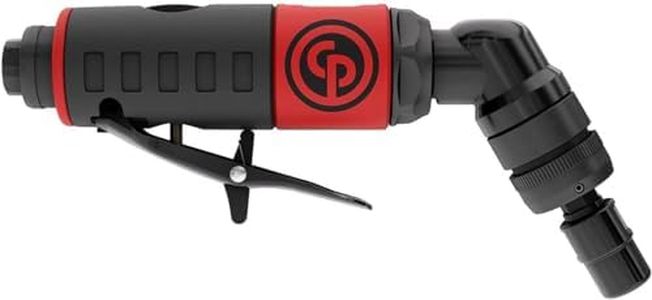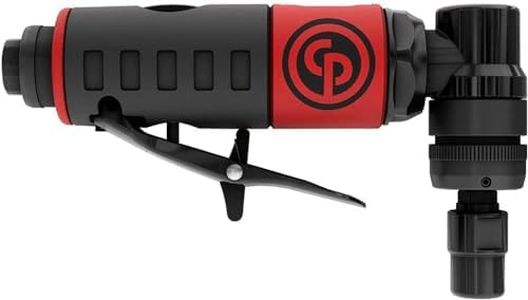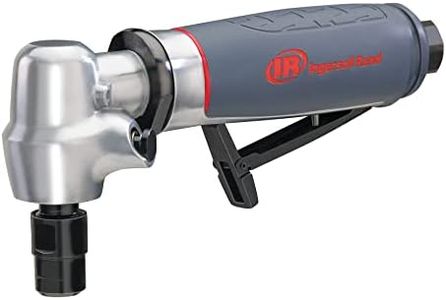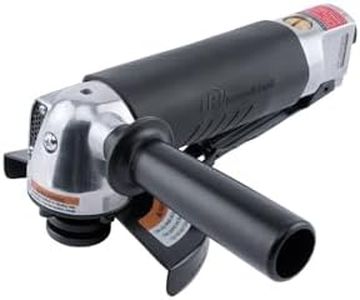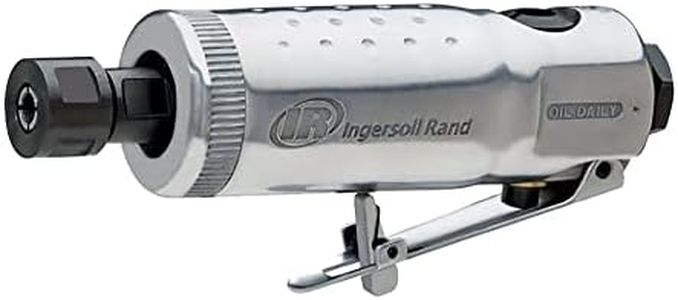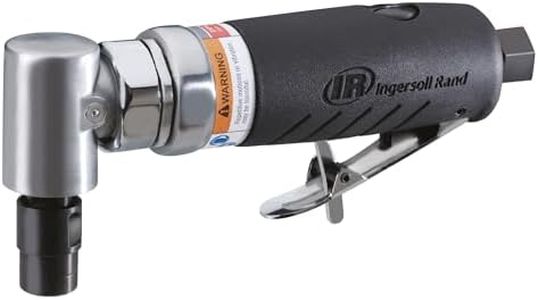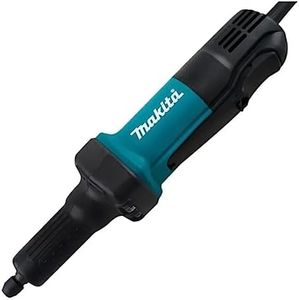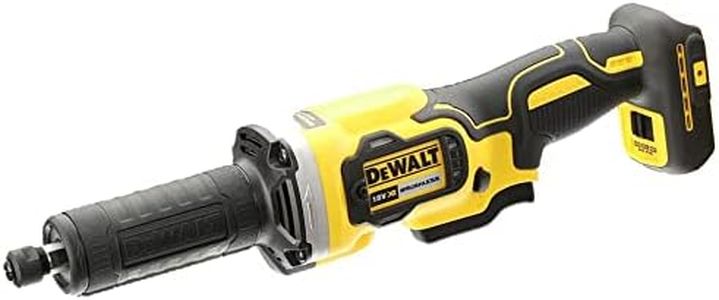We Use CookiesWe use cookies to enhance the security, performance,
functionality and for analytical and promotional activities. By continuing to browse this site you
are agreeing to our privacy policy
10 Best Die Grinders
From leading brands and best sellers available on the web.Buying Guide for the Best Die Grinders
Choosing the right die grinder makes a big difference in how easily you can complete your projects, whether you’re polishing metal, shaping wood, or removing rust. Just like any power tool, there isn’t a one-size-fits-all solution—your choice should be guided by what tasks you need to accomplish most often. A die grinder should feel comfortable to hold, strong enough for your needs, and safe to use for extended periods. Start by considering where and how you’ll use the tool, how much power you’ll need, and which features will make your work easier and safer.Power Source (Electric vs. Pneumatic)Power source tells you whether your die grinder runs on electricity or compressed air. Electric versions either plug into an outlet or use a battery, while pneumatic ones need an air compressor. Pneumatic grinders are usually lighter and can run longer without overheating, making them ideal for intense or continuous work, often in professional settings. Electric grinders are easier for home use since you don't need an air compressor, and cordless options give you more freedom of movement. To choose, think about where you'll use the tool—if you have a compressor and want continuous power, pneumatic is a good bet; if you value portability and convenience, go electric.
Speed (RPM - Revolutions Per Minute)The speed, measured in RPM (revolutions per minute), indicates how fast the tool spins its bit or attachment. Higher RPM gives smoother and quicker results for grinding, sanding, or polishing. Die grinders often range from around 10,000 to 35,000 RPM. For heavy material removal, higher speeds are helpful, but they can make the tool harder to control for intricate work. If you’re doing fine, detailed tasks or working on delicate materials, a lower speed or adjustable speed setting is best. Always consider what types of projects you do most so you’re not stuck with too much or too little speed.
Collet SizeCollet size is about the diameter of the shank bit the grinder can hold—commonly 1/4-inch or 1/8-inch. The collet acts like a clamp that grips your tool bits. Larger collet sizes let you use beefier, bigger attachments for heavier jobs, while smaller ones are best for fine detail work with small bits. If you plan to switch between tasks, look for models that support multiple collet sizes for flexibility. Choose your collet size based on the type of bits you expect to use most often.
Size and ErgonomicsThe physical size and shape of a die grinder affect how comfortable it is to use, especially for long periods. Larger, heavier models can handle tough jobs but may cause more fatigue. Compact, lightweight models are easier to control and reach tight spaces but may sacrifice some power. Think about the kind of access you'll need (tight corners, overhead work) and how long you’ll typically be holding the tool at a time—choose a size that balances comfort and capability for your typical jobs.
Safety FeaturesSafety features on die grinders may include a lock-off switch, overload protection, or a soft start. A lock-off switch prevents accidental startups, while overload protection helps prevent the tool from overheating. A soft start feature means the grinder accelerates gradually, giving you better control. If you’re less experienced or will use the tool frequently, prioritizing safety features is smart. Make sure whichever feature you choose helps you feel more confident and secure when operating the grinder.
Variable Speed ControlVariable speed means you can adjust how fast the tool spins. This is especially useful when working on different materials—softer materials like wood require slower speeds, while harder ones like metal need higher speeds. If your work involves various materials or precise control (like carving or polishing), a variable speed grinder adds versatility and helps prevent damage. For simpler, single-purpose tasks, it’s less important, but it’s a great option if you value flexibility.
